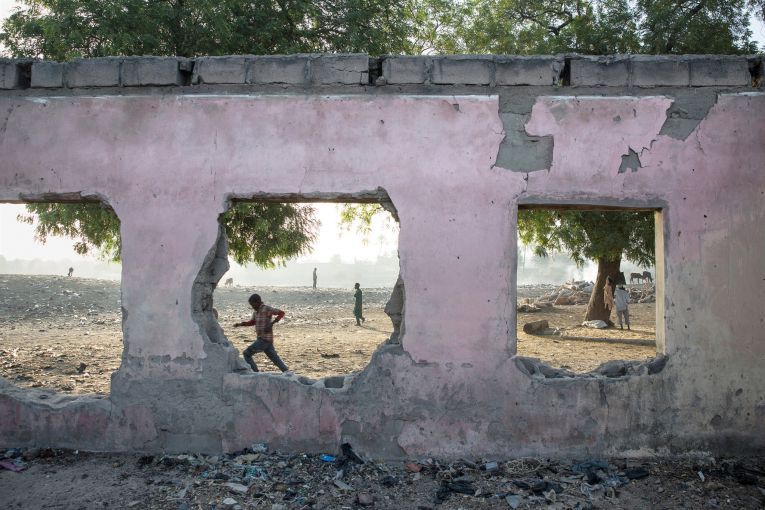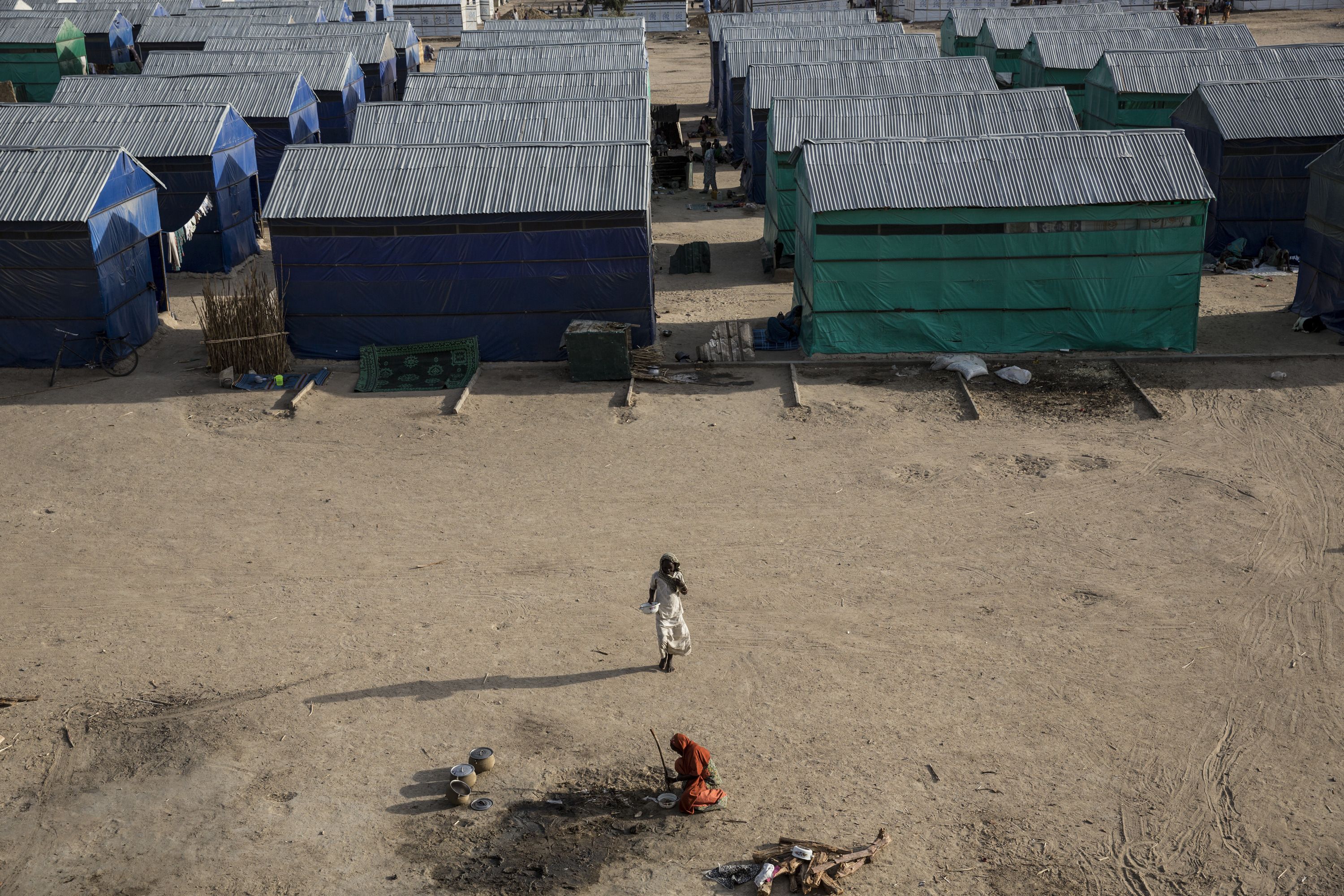[Please note that this lesson includes disturbing subject matter and is recommended for mature students only.]
Introducing the Lesson:
Reporter Sarah A. Topol and documentary photographer Glenna Gordon report on children who were abducted by the Boko Haram, a fundamental Islamist militant group based in northeastern Nigeria. They focus on four boys from the town of Baga who were kidnapped after their village was set on fire. They were trained as soldiers and forced to kill. Read their story "How Four Boy Soldiers Survived Boko Haram," published in The New York Times.
Discussion Questions:
1. "They were jokers and pranksters and rode their bikes backward into trees and trained two brown dogs to hunt hares": What was everyday life like for the boys of Baga before they were abducted? What are the similarities to your own childhood? And the differences?
2. Explain the meaning of the words "Boko Haram." What is the origin of the group? When did the group become more militant? And under what circumstances?
3. It is estimated that as many as 10,000 boys were kidnapped by Boko Haram. What is the training process for boys who become soldiers? Sarah Topol writes that the more gratuitous the violence, "the harder it becomes to contemplate returning home." Explain.
4. Child soldiers must perform multiple duties. Discuss the various roles played by boy and girl soldiers.
5. How do children cope? How do they survive? The story quotes Michael Wessells, professor in the Program on Forced Migration and Health at Columbia University, saying, "children see or feel the atrocities they commit like surreal dreams. This allows them to exist in a state somewhere between their previous selves and the reality of their new life." How does this psychological observation help explain the actions of the boys from Baga? What are the choices that many of these boys face? What are other contributing factors that help the boys survive?
6. Mustapha sometimes wonders, "Am I the same person? Myself, who doesn’t want to see corpses, I can now just cross over them and go back to a sound sleep?" What explanation does the reporter give for making this possible?
7. The youth abducted by Boko Haram did not receive an education, play sports, or enjoy family life—they were robbed of a childhood. How do Mustapha and others react to their loss?
8. What is life like for the boys once they escape? What happens when they attempt to start over? Discuss the choices some former child soldiers make when faced with confronting their past.
9. Why did the journalists change the names of the four boys? How does Glenna Gordon, the photographer, protect the identity of the boys?
10. Much media attention has been given to the 276 schoolgirls from Chibok, in northern Nigeria, who were kidnapped by Boko Haram in 2014. Yet Sarah Topol felt compelled to tell the story of four boy soldiers partly because she says "no one seemed to care about the boys from Baga." Why do you think these boys have received less attention than the girls from Chibok?
Extension Activities
It is estimated that there may be as many as 300,000 child soldiers who have participated in recent conflicts worldwide from Syria to Sri Lanka, and from Colombia to the Philippines. Significant efforts have been made to stop and prevent their use—as well as to help former child soldiers become rehabilitated and reintegrated into society.
1. Do your own research to determine where the use of child soldiers is most prevalent. What is being done to aid children affected by war and to advocate for their rights? Child Soldiers International and the United Nations Office of the Special Representative of the Secretary-General for Children in Armed Conflict are working to end child recruitment and sexual violence. Can you find examples of other organizations at the international, local and grassroots level that are working on issues related to child soldiers?
2. The use of child soldiers can be traced back to ancient times. What are the various roles they have played throughout history? Consider the Greek city-state of Sparta, the Ottoman Empire, the U.S. Civil War, and Hitler's Youth Brigade. How do the lives of today's child soldiers compare to those from the past?
3. In "How Four Boy Soldiers Survived Boko Haram," girls who were abducted are forced to become "wives" of soldiers. The UN estimates that up to 40 percent of child soldiers are female. What roles do they play and how are their experiences unique?
For more information:
Child Soldiers International: www.child-soldiers.org
Roméo Dallaire Child Soldier Initiative: www.childsoldiers.org
United Nations Office of the Special Representative of the Secretary-General for Children in Armed Conflict: http://childrenandarmedconflict.un.org
This lesson introduces students to the individual experiences of child soldiers as well as larger issues such as the impact of war on children. Students read Sarah Topol's article, "How Four Boy Soldiers Survived Boko Haram," published in The New York Times, discuss the loss of childhood, the means of survival, and various forms of rehabilitation. Extension activities involve researching efforts to prevent the use of child soldiers. [Please note that this article includes disturbing subject matter and is recommended for mature students only.]





